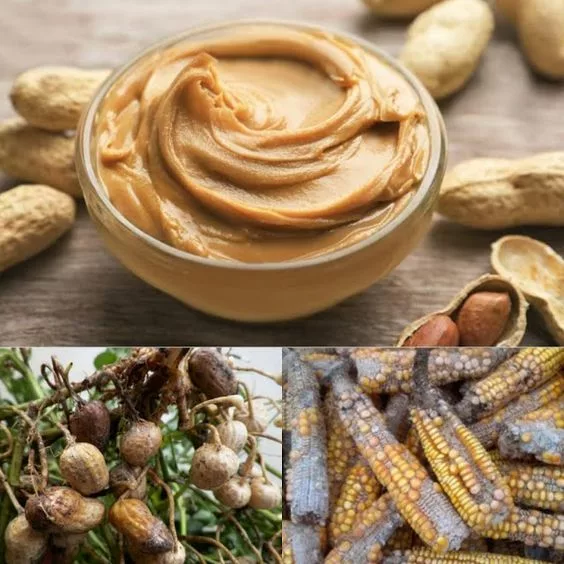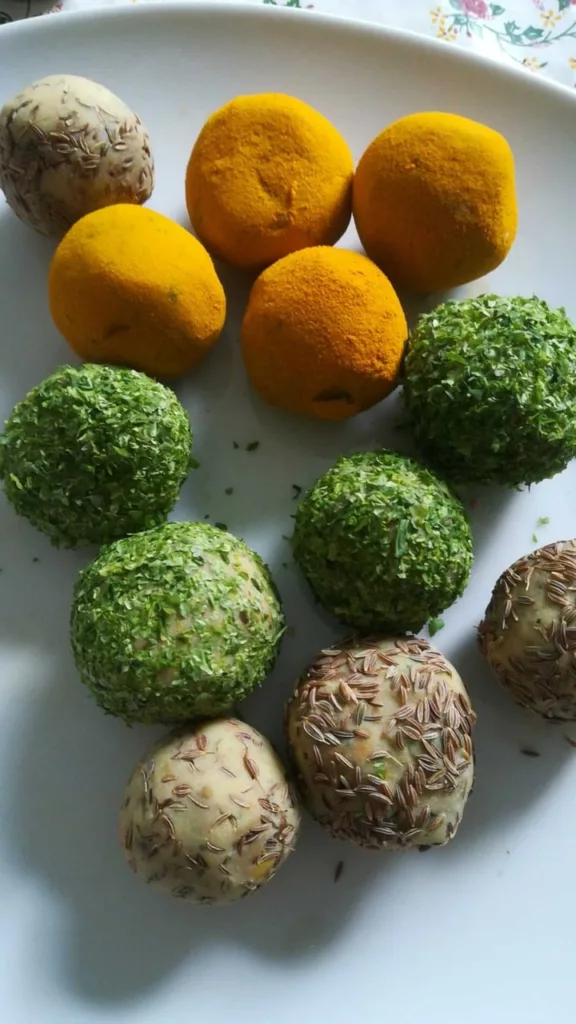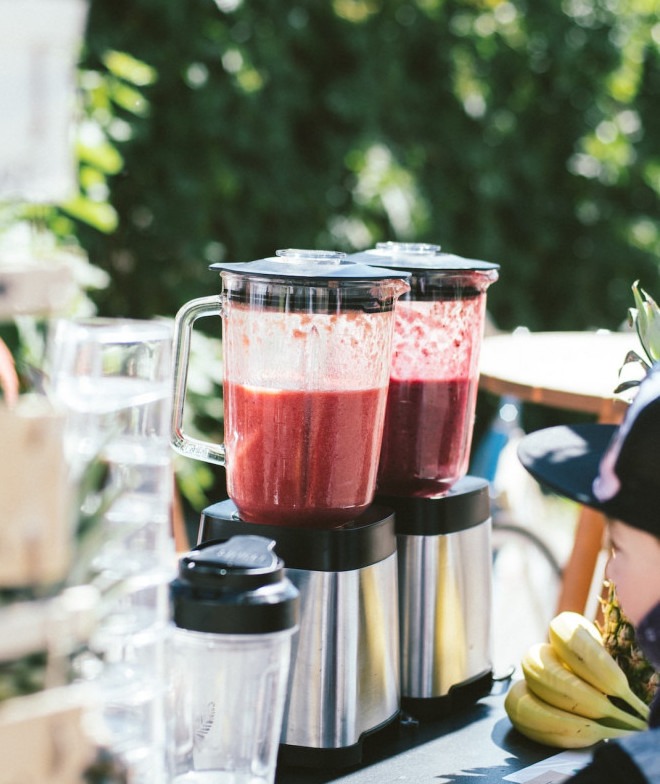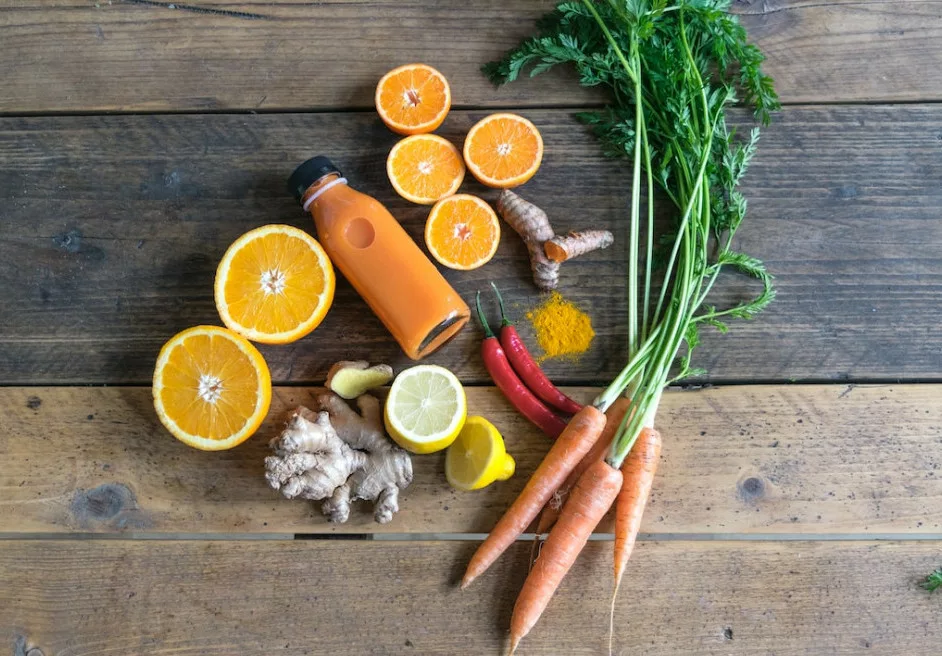
Introduction
If you are looking for a natural way to combat aflatoxicosis, turmeric might be the answer. Aflatoxicosis is a condition caused by consuming foods contaminated with aflatoxins, which are produced by certain molds. These toxins can cause liver damage, immune system suppression, and even cancer. While there are medications that can help treat the symptoms of aflatoxicosis, they may come with side effects that could cause further harm to your body. Turmeric has been used in Ayurvedic medicine for centuries and is known for its anti-inflammatory and antioxidant properties. Its active ingredient curcumin has been shown to have many health benefits, including potentially helping to prevent or treat aflatoxicosis.
Aflatoxins are naturally occurring toxic compounds produced by certain molds, particularly Aspergillus flavus and Aspergillus parasiticus. These molds can contaminate various agricultural commodities, including cereals, nuts, spices, and dried fruits. Aflatoxins are classified as carcinogens and are associated with a range of adverse health effects.They may also have side effects such as: Carcinogenicity,Hepatotoxicity and Immunotoxicity.
We are going to explore how turmeric can benefit those suffering from aflatoxicosis and how you can incorporate it into your diet to improve your overall health.
Understanding Aflatoxicosis and Its Dangers
Aflatoxicosis is a serious health condition caused by the ingestion of toxins present in certain fungi. These toxins are called aflatoxins and they can have devastating consequences if left untreated. Aflatoxin contamination sources can be found in different foods, such as peanuts, corn, and other crops that are prone to fungal growth. Prevention measures play an essential role in avoiding aflatoxin contamination. It’s crucial to ensure proper food storage conditions, especially for crops that are more susceptible to fungal growth.It’s also recommended to avoid buying or consuming products with visible molds or fungi on them. You should also ensure proper hygiene practices during food handling and preparation at all times.
Being aware of the dangers of aflatoxicosis and understanding its causes can help prevent its occurrence. By taking preventive measures such as proper storage and hygiene practices when handling food items, you can reduce the risk of ingesting toxins from aflatoxin contaminated foods.This article provides an in-depth exploration of aflatoxicosis, shedding light on its dangers and the importance of understanding and managing this problem.
Etiology and Formation of Aflatoxins
Aspergillus species, particularly flavus and parasiticus, are the primary producers of aflatoxins. These molds can contaminate a variety of food commodities, including cereals, nuts, spices, and dried fruits. Factors such as temperature, humidity, and agricultural practices influence aflatoxin formation in crops.
Health Risks Of Aflatoxicosis.
1 .Hepatotoxicity: Aflatoxins are potent hepatotoxins, causing liver damage and leading to conditions like hepatitis, cirrhosis, and liver cancer. Aflatoxin B1, the most prevalent and potent aflatoxin, is classified as a Group 1 carcinogen by the International Agency for Research on Cancer (IARC).
2 .Carcinogenicity: Prolonged exposure to aflatoxins, especially aflatoxin B1, significantly increases the risk of hepatocellular carcinoma (liver cancer). The mechanisms underlying aflatoxin-induced carcinogenesis involve DNA damage, mutation, and the formation of reactive metabolites.
3 .Immunosuppression: Aflatoxins have immunosuppressive properties, compromising the body’s immune response and making individuals more susceptible to infections. They can impair lymphocyte function, reduce antibody production, and disrupt cytokine balance, weakening overall immune system defenses.
4. Reproductive Issues: Aflatoxin exposure has been associated with reproductive health problems. In pregnant women, aflatoxin consumption can lead to adverse outcomes, including miscarriage, stillbirth, and intrauterine growth retardation. It may also impact male fertility by reducing sperm quality and motility.
Preventive Measures and Regulations
Prevention and control of aflatoxicosis require a multi-faceted approach. Implementing good agricultural practices (GAPs) during crop cultivation, including proper storage and moisture control, can minimize mold growth and aflatoxin contamination. Regulatory frameworks and guidelines, such as maximum permissible limits for aflatoxins in food, ensure consumer safety. Proper food storage, processing, and quality control measures are vital to reduce aflatoxin.
Turmeric and Its Active Ingredient Curcumin
Discovering the wonders of curcumin can be truly fascinating, as this active ingredient found in turmeric has been known for its potential health benefits.Curcumin is a polyphenol that gives turmeric its distinct yellow color and has been used in traditional medicine for centuries. It is known for its anti-inflammatory and antioxidant properties. Curcumin supplements have become increasingly popular in recent years due to their potential health benefits. Studies have shown that curcumin can actually help reduce inflammation, improve brain function, and even lower the risk of heart disease. However, it’s important to note that the bioavailability of curcumin is low on its own, so taking it with black pepper or using liposomal technology may increase absorption.
Turmeric recipes are a great way to incorporate this spice into your diet and enjoy some potential health benefits. Turmeric can be added to soups, stews, stir-fries, smoothies, and even desserts. Some popular recipes include golden milk (a warm drink made with turmeric and other spices), turmeric roasted vegetables, and turmeric-spiced popcorn. By incorporating more turmeric into your diet through these delicious recipes or by taking curcumin supplements, you may reap some of the potential health benefits associated with this amazing spice.
Overview of Curcumin as the Major Bioactive Compound in Turmeric
Curcumin, a polyphenolic compound, is the primary bioactive constituent found in turmeric. It is responsible for the characteristic yellow-orange color of the spice and many of its therapeutic effects. Curcumin is known for its anti-inflammatory, antioxidant, antimicrobial, and anticancer properties, among others.
This active ingredient has garnered considerable attention in scientific research due to its potential health benefits. Numerous studies have investigated its diverse biological activities and explored its applications in various health conditions. It is important to note that curcumin’s bioavailability is relatively low, limiting its effectiveness when consumed alone. Researchers continue to explore ways to enhance its absorption and maximize its therapeutic potential.
Incorporating Turmeric into Your Diet

If you’re looking to add some color and flavor to your meals, consider incorporating turmeric into your diet. This golden spice has been used for centuries in traditional medicine and is now gaining recognition for its potential health benefits. There are many ways to use turmeric in cooking. You can add it to soups, stews, sauces, and marinades. It pairs well with vegetables like cauliflower, carrots, and sweet potatoes. There are also many recipes online that incorporate turmeric into dishes like curries and smoothies.
- Golden Milk: Prepare a soothing cup of golden milk by combining warm milk (dairy or plant-based) with turmeric, a pinch of black pepper (to enhance curcumin absorption), and a natural sweetener like honey or maple syrup. This comforting beverage is not only delicious but also a great way to enjoy the benefits of turmeric.
- Turmeric Rice: Add a vibrant twist to your rice dishes by incorporating turmeric. Simply add a pinch or two of turmeric powder while cooking rice to infuse it with a beautiful yellow color and a subtle earthy flavor. Turmeric rice pairs well with various curries, stir-fries, and grilled vegetables.
- Spice up Your Eggs: Sprinkle a pinch of turmeric powder onto scrambled eggs, omelets, or frittatas for an extra burst of flavor and a vibrant hue. Turmeric complements eggs wonderfully and adds a hint of warmth to your breakfast or brunch.
- Flavorful Curry Powder: Make your own homemade curry powder by combining ground turmeric with other aromatic spices like cumin, coriander, ginger, and cinnamon. This versatile spice blend can be used to flavor a wide range of dishes, including curries, stews, marinades, and roasted vegetables.
- Turmeric Roasted Vegetables: Toss your favorite vegetables, such as cauliflower, carrots, or sweet potatoes, with a drizzle of olive oil, turmeric powder, and a pinch of salt. Roast them in the oven until tender and slightly caramelized. The combination of turmeric and roasted flavors creates a delightful side dish or a hearty addition to salads.
It’s important to note that the amount of curcumin in turmeric is relatively low, so if you want to experience the full health benefits of this spice, you may want to consider taking a turmeric supplement.My best recommendation is from Amazon Shopping site for purchase. Or you can also do any other you wish. Turmeric supplements come in various forms such as capsules or powders. When choosing a supplement, look for one that contains a high percentage of curcuminoids (the active compounds in turmeric) and is standardized for purity and potency.
It’s also important to follow the recommended dosage on the label or as directed by your healthcare provider since high doses of curcumin may have side effects like stomach upset or bleeding issues. Overall, incorporating turmeric into your diet or taking a supplement can be a simple yet effective way to support your overall health and wellbeing.
Other Natural Remedies for Aflatoxicosis
I know looking for alternative remedies to support your health can lead you down a path of exploring various natural solutions, more on turmeric, there are other herbal supplements that have been studied for their potential in alleviating the effects of aflatoxicosis. One such supplement is milk thistle, which has been shown to protect liver cells from damage caused by toxins like aflatoxins. Homeopathy remedies may also be worth considering when looking for natural solutions for aflatoxicosis. One study found that homeopathic remedies made from certain mushrooms were effective in reducing the negative effects of aflatoxins on chicken liver cells. However, it’s important to note that research into homeopathy and its effectiveness is still ongoing and controversial.
- Milk thistle (Silybum marianum): Milk thistle is a herbal remedy commonly used to support liver health. It contains a bioactive compound called silymarin, which has antioxidant and anti-inflammatory properties. Studies suggest that milk thistle may help protect the liver from aflatoxin-induced damage.
- Green tea (Camellia sinensis): Green tea is rich in polyphenols, including epigallocatechin gallate (EGCG), which has been shown to have hepatoprotective properties. Research indicates that green tea and its components may help reduce the toxicity and oxidative stress caused by aflatoxins.
- Garlic (Allium sativum): Garlic has been recognized for its potential antimicrobial and hepatoprotective effects. Studies suggest that garlic and its bioactive compounds may help counteract the toxic effects of aflatoxins and support liver function.
- Ginger (Zingiber officinale): Ginger has anti-inflammatory and antioxidant properties that may help alleviate the inflammatory response and oxidative stress associated with aflatoxicosis. Additionally, ginger may aid in digestion and support liver function.
- Dietary antioxidants: Consuming a diet rich in antioxidants, such as fruits and vegetables, can help support overall health and counteract the oxidative stress caused by aflatoxins. Antioxidants like vitamins C and E, beta-carotene, and selenium may play a role in protecting cells from aflatoxin-induced damage.
It’s important to keep in mind that while natural remedies like herbal supplements and homeopathy may offer some benefits, they shouldn’t replace traditional medical treatment or advice from a healthcare professional. It’s always best to consult with a doctor before starting any new supplement regimen or attempting to treat any condition with alternative medicine.
Frequently Asked Questions
How does aflatoxicosis affect different species of animals?
Have you ever wondered how different species of animals are affected by aflatoxicosis? The truth is, species susceptibility varies greatly depending on a multitude of factors such as age, sex, and overall health. For example, young animals are more susceptible to the toxic effects of aflatoxin than older ones. Aflatoxin toxicity mechanisms involve the liver and can result in serious damage to this vital organ. In some cases, the liver may produce enzymes that convert aflatoxins into even more toxic compounds. Overall, it’s important to understand the varying effects of aflatoxicosis among different species in order to effectively prevent and treat this dangerous condition.
Here’s an overview of how aflatoxicosis can impact different animal species:
- Livestock and Poultry: Livestock animals such as cattle, pigs, sheep, and poultry are particularly susceptible to aflatoxicosis. When these animals consume feed contaminated with aflatoxins, they may experience:
- Reduced feed intake and weight loss.
- Impaired liver function, leading to jaundice and liver damage.
- Immune system suppression, making them more susceptible to infections.
- Decreased milk production in dairy cows.
- Decreased egg production and poor hatchability in poultry.
Aflatoxicosis can have significant economic implications for the livestock and poultry industry, resulting in reduced productivity, poor growth rates, and increased mortality.
- Pets and Companion Animals: Dogs, cats, and other pets can also be affected by aflatoxicosis. Symptoms may include:
- Loss of appetite and reduced energy levels.
- Vomiting and diarrhea.
- Jaundice and liver damage.
- Neurological symptoms such as seizures and uncoordinated movements.
- Increased susceptibility to infections.
Aflatoxicosis in pets can be life-threatening, and immediate veterinary attention is essential for diagnosis and treatment.
- Wildlife: Wild animals can be exposed to aflatoxins through contaminated food sources in their natural habitats. While the impact of aflatoxicosis on wildlife is less studied, it can lead to:
- Liver damage and dysfunction.
- Reduced reproductive success.
- Compromised immune function.
- Impaired foraging and hunting abilities.
- Aquatic Species: Fish and other aquatic species can be exposed to aflatoxins through contaminated feed or contaminated water sources. Aflatoxicosis in aquatic species can result in:
- Impaired growth and development.
- Liver damage and dysfunction.
- Suppressed immune system.
- Increased susceptibility to diseases.
The impact of aflatoxicosis on aquatic species can be detrimental to aquaculture operations and wild fish populations.
It’s important to note that the susceptibility and sensitivity to aflatoxins can vary even within the same species, depending on factors such as age, health status, and exposure levels. Proper feed management, rigorous quality control, and adherence to regulatory guidelines are crucial in preventing aflatoxin contamination and minimizing its impact on animal health.
Can turmeric be harmful if consumed in large quantities or for an extended period of time?
When it comes to turmeric consumption safety, studies have shown that consuming large quantities of the spice over an extended period of time can lead to potential side effects. While turmeric is generally considered safe for most people when consumed in moderate amounts as a culinary ingredient or supplement, excessive intake could cause gastrointestinal issues such as nausea and diarrhea. Additionally, long-term use of turmeric supplements may increase the risk of bleeding and interact with certain medications. Therefore, it’s important to consult with your healthcare provider before adding high-dose turmeric supplements to your daily routine. Consuming turmeric in extremely large quantities or for an extended period of time may have some considerations:
- Gastrointestinal Effects: Turmeric contains compounds that can stimulate the production of gastric acid, potentially leading to stomach upset, indigestion, and gastrointestinal discomfort. Consuming excessive amounts of turmeric may exacerbate these effects, particularly in individuals with pre-existing digestive conditions.
- Interference with Iron Absorption: Turmeric contains compounds known as polyphenols, which can bind to dietary iron and potentially inhibit its absorption in the body. This may be of concern for individuals with iron-deficiency anemia or those who rely heavily on plant-based sources of iron.
- Allergic Reactions: While rare, some individuals may have an allergic reaction to turmeric. Symptoms can range from mild skin irritation to more severe allergic reactions such as hives, itching, or difficulty breathing. If you have known allergies to turmeric or other related plants, it is advisable to avoid excessive consumption.
- Interactions with Medications: As mentioned earlier, high-dose curcumin supplements or consuming excessive amounts of turmeric may interact with certain medications, particularly blood thinners and antiplatelet drugs. It is important to consult with a healthcare professional or pharmacist to ensure there are no potential interactions.
It’s worth noting that the typical amounts of turmeric used in cooking or as a dietary spice are unlikely to cause any harm in healthy individuals. However, if you plan to consume turmeric in large quantities or for an extended period, such as through supplementation, it is advisable to seek guidance from a healthcare professional to ensure it aligns with your specific health profile and any pre-existing conditions you may have. As with any dietary or health-related concern, individual responses can vary, and it is always best to consult with a healthcare professional for personalized advice based on your unique circumstances.
Are there any potential side effects or interactions of curcumin with medication?
When taking curcumin supplements, there’s a possibility of potential medication interactions with certain drugs such as blood thinners and diabetes medications. It’s recommended to consult with your healthcare provider before taking curcumin supplements, especially if you’re on any medication. In terms of dosages, studies have shown that doses up to 8 grams per day for short periods of time were well-tolerated in humans without any significant side effects.
Here are some few side effects of this herb:
- Gastrointestinal Effects: Curcumin may cause gastrointestinal symptoms such as stomach upset, bloating, and diarrhea, particularly when taken in high doses. Individuals with a history of gastrointestinal disorders may be more susceptible to these side effects.
- Interactions with Blood Thinners: Curcumin may have mild anticoagulant properties, which means it can potentially thin the blood and inhibit blood clotting. If you are taking blood-thinning medications like warfarin, aspirin, or clopidogrel, it is important to consult with your healthcare provider before taking curcumin supplements, as it may increase the risk of bleeding or interact with the medication.
- Interaction with Antiplatelet Drugs: Curcumin may also interact with antiplatelet drugs like clopidogrel, ticlopidine, or dipyridamole, which are commonly used to prevent blood clotting. Combining curcumin with these medications may increase the risk of bleeding or bruising.
- Interaction with Gallbladder Function: Curcumin stimulates the production of bile, which is important for digestion. Individuals with gallbladder problems or those who have had their gallbladder removed may experience digestive discomfort or diarrhea when taking curcumin supplements.
- Potential Interaction with Chemotherapy Drugs: Some studies suggest that curcumin may enhance the effects of certain chemotherapy drugs or radiation therapy. However, it is essential to consult with an oncologist before using curcumin as an adjunct to cancer treatment, as it may interfere with specific medications or treatment protocols.
It’s important to follow the manufacturer’s recommended dosage and not exceed it without consulting with a healthcare professional. Overall, while curcumin has many potential health benefits, it’s important to be cautious and informed when incorporating it into your diet or supplement regimen.
Can turmeric be used as a preventative measure against aflatoxicosis?
To effectively treat aflatoxicosis with turmeric, it’s important to consider the various forms and dosages available. Turmeric can be taken in many different forms, such as capsules, powders, teas, or extracts. The dosage should be tailored to meet individual needs based on factors such as age, weight, and overall health. Curcumin the active ingredient in turmeric is responsible for its anti-inflammatory and antioxidant properties. Combining curcumin with other natural compounds, like piperine or quercetin, has increased its bioavailability and efficacy. Therefore, selecting a turmeric supplement that includes these combinations may provide maximum benefits for treating aflatoxicosis
Turmeric and its active compound curcumin have shown potential in mitigating the effects of aflatoxicosis; however, their role as a preventative measure is still being studied. Turmeric’s antioxidant and anti-inflammatory properties, along with its ability to support liver function, suggest that it may have a protective effect against aflatoxicosis.
Are there any specific forms of turmeric or curcumin that are more effective in treating aflatoxicosis?
To effectively treat aflatoxicosis with turmeric, it’s important to consider the various forms and dosages available. Turmeric can be taken in many different forms, such as capsules, powders, teas, or extracts. The dosage should be tailored to meet individual needs based on factors such as age, weight, and overall health. Curcumin is responsible for its anti-inflammatory and antioxidant properties. Combining curcumin with other natural compounds, like piperine or quercetin, has been shown to increase its bioavailability and efficacy. Therefore, selecting a turmeric supplement that includes these combinations may provide maximum benefits for treating aflatoxicosis.
It is worth considering certain factors that may impact their effectiveness:
- Bioavailability: Curcumin, the active compound in turmeric, has limited bioavailability, meaning it is poorly absorbed by the body. To enhance bioavailability, various formulations and delivery methods have been explored, including:
- Piperine: Piperine, a compound found in black pepper, has been shown to enhance the absorption of curcumin. Combining turmeric or curcumin with black pepper or piperine-containing supplements may improve its bioavailability.
- Liposomal formulations: Liposomes are microscopic lipid-based vesicles that can encapsulate curcumin, enhancing its absorption. Liposomal curcumin formulations have shown promise in improving bioavailability and efficacy.
- Nanoformulations: Nano-sized particles of curcumin, such as nanoparticles or nanomicelles, have been developed to improve its solubility and absorption. These nanoformulations may enhance curcumin’s bioavailability and tissue distribution.
- Dose and Duration: The effectiveness of turmeric or curcumin in treating aflatoxicosis may also depend on the dosage and duration of treatment. Optimal dosages and treatment durations are still under investigation, and individual variations in response may exist.
- Combination with Other Compounds: Some studies suggest that combining curcumin with other compounds may enhance its effectiveness. For example, combining curcumin with quercetin, a flavonoid with antioxidant properties, has shown potential synergistic effects in reducing aflatoxin-induced liver damage.
While research on the specific forms of turmeric or curcumin for treating aflatoxicosis is still evolving, it is important to consider the quality and purity of the turmeric or curcumin product used. Choose reputable brands or consult with a healthcare professional or a veterinarian (for animal use) to ensure the product’s reliability and safety. It is essential to note that turmeric or curcumin should not replace standard medical treatments for aflatoxicosis.
Conclusion
In conclusion, incorporating turmeric into your diet can be a natural and effective way to combat aflatoxicosis. As we’ve learned, this dangerous condition can have serious health consequences, so it’s important to take preventative measures. Curcumin has been shown to have anti-inflammatory properties and may also help protect the liver from damage caused by aflatoxins. By adding turmeric to your meals or taking supplements, you can potentially reduce your risk of developing aflatoxicosis.
It’s important to note that while turmeric may be helpful in preventing aflatoxicosis, it shouldn’t be used as a replacement for medical treatment if you suspect you’ve been exposed to these toxins. Additionally, there are other natural remedies, such as milk thistle and dandelion root, that may also offer protective benefits against aflatoxins. By staying informed and utilizing all available resources, we can take proactive steps towards a healthier future. As the saying goes, “an ounce of prevention is worth a pound of cure.”By incorporating turmeric and other natural remedies into our diets, we can potentially safeguard ourselves from the dangers of aflatoxicosis. Let’s strive towards better health through knowledge and action.


